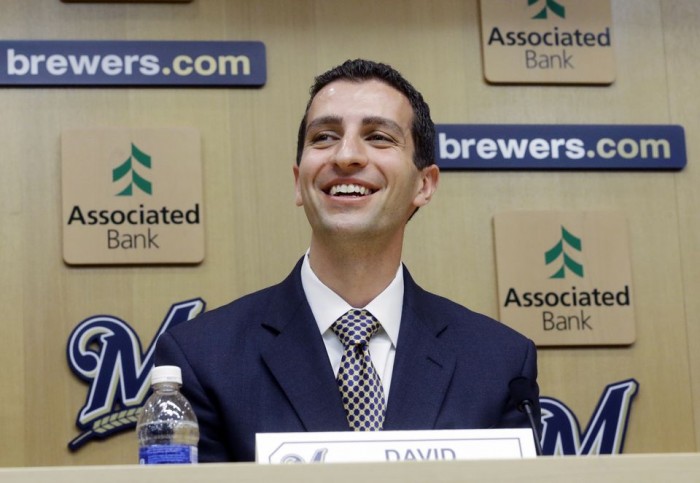I have written in the past about how the Brewers rebuild resembles the Cubs rebuild. The Cubs stockpiled position player talent and hoped that a good chunk of it would develop into quality major leaguers. The Brewers appear to be attempting to do the same thing. Orlando Arcia, Lewis Brinson, and Corey Ray form the core of a group of young position players who the Brewers hope will be the key members of the next playoff team.
An important aspect of the Cubs transition from rebuilding team to contender was their decision to enter the free agent market. Addison Russell, Kris Bryant, and Anthony Rizzo are excellent players, but they obviously needed help; no organization can create the necessary depth to build a World Series team just from internal options (save maybe the 2008 Rays). The Cubs developed all the talent they could, but they knew they still had certain needs that they had not addressed, with starting pitching being key among them. They subsequently went into the free agent market and signed Jon Lester, and then John Lackey.
It is worth noting that the Cubs purposely forewent pitching; when they traded their big leaguers for minor leaguers during Theo Epstein and Jed Hoyer’s first couple years, they appear to have prioritized getting back position players. The Jeff Samardzija (for Addison Russell) and Matt Garza (for Mike Olt, although Carl Edwards also came in that trade) trades are good examples. They also spent their high draft picks on position players, taking Kris Bryant when Jon Gray–who some had rated higher than Bryant–was still available. The Brewers, though, are not doing this, especially with regard to trades.
Unless Milwaukee decides to trade Ryan Braun, Jonathan Lucroy was the club’s last big trade chip heading into this new competitive window. He was also therefore their last big chance to retool the farm system and add to it. But the club’s two biggest trades in the last year-plus–Lucroy and Carlos Gomez–have included pitchers as significant pieces and not just hitters. The addition of Josh Hader and Luis Ortiz enhanced the organization’s pitching depth, and it has also signified a departure from the Cubs’ strategy.
There are logical reasons for this–the Brewers were never going to sign a Lester-caliber pitcher–but the upshot is that there isn’t a glaring hole on the projected future roster the way there was in Chicago. But the Cubs also showed the value of augmenting through free agency when the time is right, and the Brewers can (and should) take some lessons from that.
The timing of the Brewers’ rebuild is a bit of a controversial topic, as some believe the Brewers should continue their tear down (and thus likely trade Braun) and some believe they could conceivably take a leap towards competition as early as this year. I lean more towards the latter, but I recognize that there is some uncertainty. For one, the Brewers will be relying on Arcia to take a step forward. For another, other players who like they could be contributors at positions not currently locked down (Lewis Brinson and Jacob Nottingham) are not yet even in the big leagues.
Therefore, the question is how big the club should go in free agency this year. I thought David Stearns took a smart approach last year by looking for low-risk flyers, and I imagine he will continue to do that this year. But the relevant question is whether he should look beyond that lower class of free agent.
I tend to think the answer should be no because the Brewers cannot afford to carry any mistakes. They no longer have any massive holes that need filling (center field, where Brinson and/or Brett Phillips should presumably be up at some point, and third base, where Jonathan Villar has moved with Scooter Gennett proving competent at second), so there is less urgency than there has been in the past.
Most importantly, though, the Brewers don’t know exactly where they will need to augment. Obviously, in a best case scenario, all their prospects will work out and Arcia, Brinson, and Domingo Santana will anchor a lineup while Ortiz and Hader top the rotation. However, the Brewers are smart enough to know that won’t happen, but they are not smart enough to know which ones won’t succeed. For that reason, I would advocate patience.
They will have the opportunity to fill their holes once they figure out where exactly those holes are. At this point, though, there isn’t enough information to determine where money should be allocated, so patience is the best route. They should still jump on opportunities to buy low (an example might be Jason Castro), but I would caution against any longer-term deals until they have a better sense of their next competitive roster. Unfortunately, they are forced to be stingier because of the market size, and this path gives the team the best chance to maximize the dollars they inevitably spend in the future.
